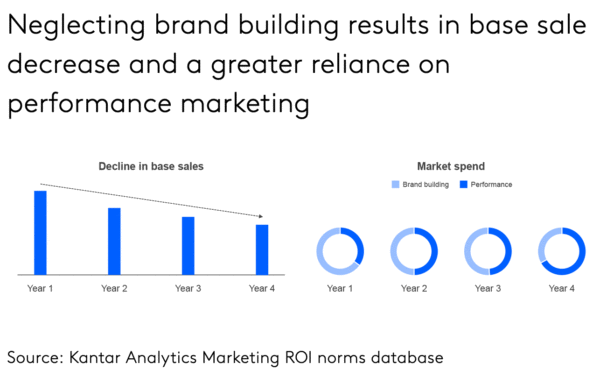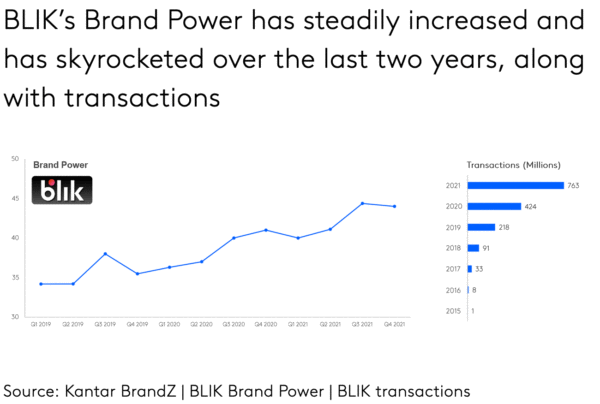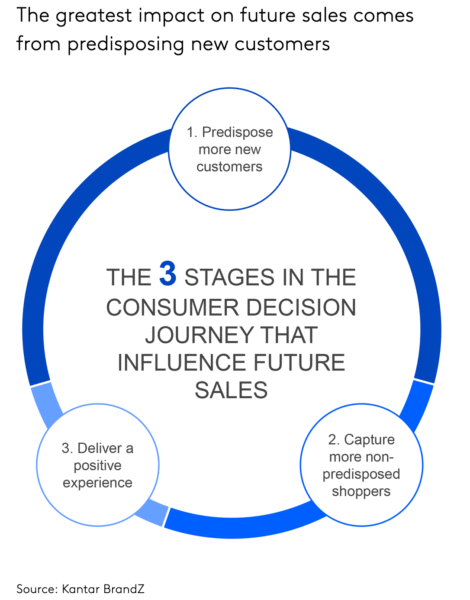Modern marketing dilemmas: Where does performance marketing meet brand building?
March 15, 2022

By Mary Kyriakidi
This series seeks to answer some of the most pertinent questions (or dilemmas) of the modern marketer. Questions that can’t be answered with a simplistic yes or no, but require investigative research, critical thinking and insatiable curiosity. Because “the answer is never the answer” as countercultural novelist Ken Kesey used to say. “What’s really interesting is the mystery. If you seek the mystery instead of the answer, you’ll always be seeking.”
Our first theme – the clash of performance marketing and brand building – permeated the industry huddles with the rise of digital measurement tools, and hasn’t left the spotlight since. In this article, we will argue that if you invest correctly, sales will come – now and in the future. And Marketing ROI plays a critical part in this decision-making process, albeit only offering half of the truth.
Once upon a time in Marketing…
Return on Investment (ROI) has rightfully been a popular metric in business since the 1920s. Marketing executives, tasked to give people a reason to care about the products and services they sell, have been spending money to make money. And to measure their effectiveness, they had to offer proof that their endeavors brought a return on their marketing investment.
In the earlier years, gut instinct was the standard operating model. Fluffiness and some degree of unaccountability were associated with it making marketing budgets a common casualty in economic slowdowns. Then, the digital explosion appeared like a knight in shining armor and numerous media solutions sprang up in the campaign measurement spectrum to help clean up the industry’s act.
The Marketing ROI practice became more tangible, and the metrics easier to calculate. Industry executives breathed a sigh of relief: they could now justify their expenses with greater precision, and determine their most effective efforts, even compare their marketing efficiency against competitors. They felt closer than ever to finance – holding themselves accountable for using company funds wisely. But alongside these benefits, came a somewhat large degree of imbalance in measuring and equally recognizing all aspects of a business’s sales performance.
Is Marketing ROI nonsensical? No. But mind its bias when used on its own.
If Marketing ROI is such a good thing, why is it frequently criticized by the marketing academic community? “A silly metric to some degree,” Mark Ritson says, “a stupid metric” exclaims Byron Sharp, picking not only on the (often too short) time variable on which it’s calculated, but also on its synonymity with marketing accountability. “ROI is not so much understood as waved about as a totem to ward off evil spirits, namely those trying to cut advertising expenditure,” writes Marketing Professor Tim Ambler of London Business School.
The top argument against Marketing ROI is that it excludes longer-term results. It creates a fallacy of growth that comes at the expense of building long-term brand profitability. Because Marketing ROI’s arithmetic calculation doesn’t include the value that a brand creates for a business. It’s a division (not a subtraction), with the cost of the current marketing expenditure as the denominator. If this is nil, ROI is infinite. This means that those hypnotized in a Marketing ROI trance will find it hard to see beyond the immediate gains of performance marketing. Hence, they’ll end up making lower returns and less profit in the long run.
There is inalienable evidence that unbalanced brands won’t win in the long term. Multiple Kantar studies reveal that if marketing mix allocation consistently favors performance marketing, baseline volume sales will steadily weaken.

Similarly, wisdom from Kantar BrandZ forewarns of restricted growth when brand building declines. Between 2019 and 2021, brands with growing equity increased their brand value by 72% compared to just a 20% increase for brands with declining brand equity.
If the evidence advises against a partisan approach, why do many marketers still fall into the trap of favoring performance marketing and getting stuck in a vicious circle of discounting and eroding margins? The answer is multi-faceted, but largely lies in a practical caveat: metrics-driven performance marketing increases a marketer’s fighting chance for a larger budget. Because although it’s quite demonstrable to talk about generated leads, a sale, a click; in essence, the reflex consumer reaction to a marketer’s short-term tactics, the contrary is true for brand building. As an industry, we still grapple to show the rewards of long-term investments and how these influence people’s future behavior.
The solution to getting the balance right comes from analytics
When it comes to evaluating the effect you have on customers, and the likely effect in the future, the metrics are different: to foresee short-term gains, metrics are rational and direct (they measure behaviors), whereas those more likely to predict long-term success are emotional and indirect (and slow-moving! They measure attitudes that shift slowly).
But don’t let the ancillary nature of the latter cluster fool you; these indicators still influence sales over the long run as they come as a package deal with an improved consideration, a boosted salience, and an enhanced perception that a product is good value for money and there is greater tolerance for a higher price.
With the metrics under your belt, how can you make sure they deploy the right mix of brand building and performance efforts? We urge you to go beyond the traditional marketing mix models and measure not only the direct, but also the indirect impact of marketing on sales, i.e., the equity impact of marketing on sales. The inaugural and very important step to ensure you are deploying the right mix of brand building and performance efforts is to evaluate your marketing channels; are the dynamics of PR, TV, online video, influencers, print, search, display and out of home generating both imminent and future sales growth for your brand?
Many aspiring balanced brands come to us for a comprehensive assessment of marketing ROI, or what we refer to as Total Marketing ROI (TMROI): a comprehensive and holistic framework to measure and optimize effectiveness across all marketing channels integrating sales and brand metrics into one predictive system. Small but decisive tweaks in their channel mix allocation optimize our clients’ impact, which lead to a healthy uplift in sales. This is exactly what our client from the retail sector experienced. By optimizing their spending allocation between brand and activation they enjoyed a 10% increase in total sales, driven by long-term effects and baseline growth for the brand.
Building balanced brands
Ancient Greeks strongly believed that you should live your life choosing the mean (average) and avoid the extremes on either side, as much as possible. Because having ‘everything in moderation’ produces harmony, goodness and beauty.
In marketing specifically, this leniency generates greater returns in the future. And, indeed, Les Binet and Peter Field have shown this empirically – that if you had just the choice of doing short or just the choice of doing long, you should actually opt for both. “You need to do both jobs,” Binet explains, “because each enhances the other, and you need to do them in balance.”
These brand stories breathe life into the theory. When Heinz shifted focus to sales activations and neglected its brand, the woes didn’t take long to surface. But when Dove masterfully balanced a strong emotional connection (pushing the beauty boundaries) with good old fashioned persuasion (product benefits), sales soared.
Even in a sector where it’s least expected, like fintech, “the real differentiator is not technology, but the brand itself,” Piotr Jan Pietrzak, Director of International Development at BLIK told us. “Quite early on, we started talking less about the product and the technology and really pushed the brand. It’s the brand that eased the synergies with the banks and gently nudged our allies to become more compatible. As the brand grew so did our leverage.” BLIK’s Brand Power and transactions have been growing in perfect sync.

Different brands address their balance thermostat at different points in their brand life stage: GoDaddy initially doubled down on brand marketing and it was only much later that the web hosting company shifted its efforts to telling people what they do and who they do it for. For a while, people knew the brand, but they couldn’t quite tell what they did. In the case of Airbnb, in one of the sectors hit hardest by COVID-19, it was the change in focus from performance marketing to brand building that paid off. In 2021, its first large-scale global brand campaign in five years, ‘made possible by hosts’ resulted in a +20% increase in traffic, proving that some long-term marketing efforts can also produce some short-term effects.
Ease the pressure to appeal to existing buyers and the overeliance on Marketing ROI
Marketing ROI optimizes marketing spend, but it’s based on half of the truth (the present and the near future) – and, for that, it falls short. We’ve done extensive research on the three phases of the consumer decision journey that build sales momentum now and in the future. We found that a strong performance at each stage adds up to an overall increase (in sales) of 46% across three years. But, more pertinently, we discovered that one of the three stages influences future sales much more than the other two.
- Predisposing more new customers has the greatest impact
- Capturing more shoppers that were not predisposed (what we call brand activation) comes next
- Last is the stage of delivering a positive experience.

The headline of this article could read: ‘Future growth will come from future buyers’. Because those buyers who are currently not wired to choose your brand (i.e., your infrequent buyers or even the non-buyers of the category) are, ironically, the ones who will help your company grow. From an ROI perspective, the focus on predisposing more new customers and long-term returns seems like “the miserable thing to do,” as Byron Sharp explains, “but that is investment in the future, in reaching people who will be buying in the future”.
The tides are turning; balance is in the air
ROI remains a popular comparative practice across a business’s different investments (how does a marketing investment fare against a technology one or a product one?) and as a metric, Marketing ROI remains very important for CMOs. Many will openly admit that the lures of performance marketing are bewitching. “Marketers often fall into the last-click attribution trap, which gives too much credit to direct response tactics.” Brent Reinhart, GM, CMO, JPMorgan Chase & Co says, and then adds: “I’ve been guilty of that myself in the past.”
But the tides are turning: More and more companies are challenging the split between performance and brand marketing and creating more of a balance. Realization comes first in this pursuit of marketing excellence. So, look around you; if you are sitting in a siloed performance or brand team with separate goals and KPIs, raise your hand. Now is the time to do something about it.






























